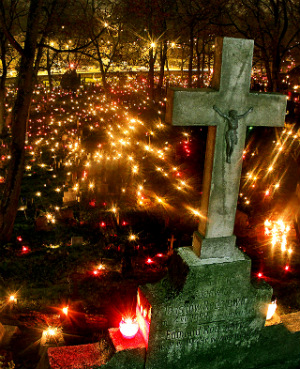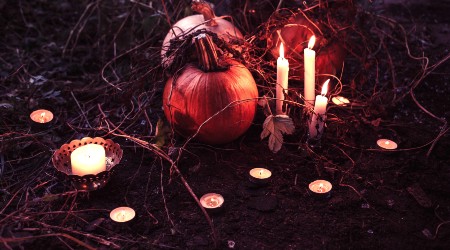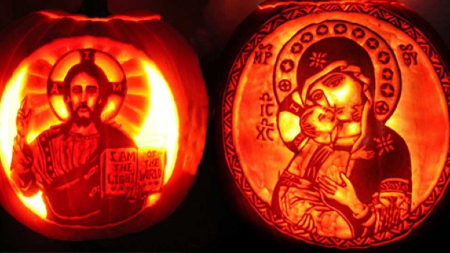We ask you, humbly: don't scroll away.
Hi readers, it seems you use Catholic Online a lot; that's great! It's a little awkward to ask, but we need your help. If you have already donated, we sincerely thank you. We're not salespeople, but we depend on donations averaging $14.76 and fewer than 1% of readers give. If you donate just $5.00, the price of your coffee, Catholic Online School could keep thriving. Thank you.Help Now >
Frascati
FREE Catholic Classes
DIOCESE OF FRASCATI (TUSCULANA).
One of the six suburbicarian (i.e. neighbouring) dioceses from an immemorial date closely related to the Roman Church . The city of Frascati is about twelve miles from Rome on the northern slopes of the Alban Hills, pleasantly and healthfully situated. Its principal source of wealth is its vineyards, which yield an excellent wine. The history of the city (population, 10,000) is bound up with that of ancient Tusculum, which, according to the legend, was founded by Telegonus, the son of Ulysses and Circe. In the kingly period Tusculum was an ally of Rome, to which it later became subject. After the expulsion of Tarquinius Superbus, Octavius Manilius, the tyrant of Tusculum, and son-in-law of Tarquinius, roused the Latin communes against the Roman Republic (507 B. C.); they were routed, however, at the battle of Lake Regillus (496 B. C.). In 493 the Latin League with Rome was renewed. After the disastrous battles of Vesuvius and Trifanum (338 B. C.), Rome, in order to detach Tusculum and other towns from the Latin League, conferred on them the privilege of the highest citizenship ( jus suffragii et honorum ). While the other Latin towns waned steadily, Tusculum grew and became in the course of time the favourite pleasure resort of the rich Roman nobles, whose sumptuous villas were scattered over the slopes of the hill; many of them can even yet be identified among the mass of ruins. The Villa of Lucullus, now the Villa Torlonia, the most splendid of them all, was famous for its library. The Villa of Agrippina, the Villa of Claudius, and those of the Flavian emperors stood on the site of modern Frascati. That of Marcus Porcius Cato, the Censor, rose on the site now occupied by the village of Monte Porzio Catone, named therefrom. Tiberius, Julia, and Vespasian also had villas at Tusculum. The exact site of Cicero's villa, where he wrote the "Disputationes Tusculanæ" and other works, is a matter of learned controversy. In the opinion of some it occupied the present site of the monastery of Grottaferrata ; others hold that it was near the modern Villa Rufinella. A more probable opinion is that it stood on the knoll above Grottaferrata. To adorn it Cicero commissioned his friend Atticus to purchase statues in Athens, the cost of which almost ruined him financially. When he was exiled in 58 B. C. the villa was sacked, and the Consul Gabinius carried off much booty to his own house. On the top of the hill near the western gate of the old town, there are to be seen even today the ruins of an immense villa, discovered by Canina, who drew a plan of it; it is commonly but erroneously known as the Villa of Tiberius. The ancient town was built along the ridge of the hill, about 2000 feet above the sea-level. There remain the ruins of the Greek theatre, the fortress with megalithic walls, and an amphitheatre locally known as Scuola di Cicerone (Cicero's School); there are also rough roads paved with huge polygonal blocks of stone, and lined with tombs, grottoes, etc. Excavations were begun by the Jesuits in 1741, and were placed by Lucien Bonaparte under the direction of Biondi and Amati in 1819; later Maria Christina of Savoy had the work carried on by Canina, who wrote a description of the discoveries. Some of the most beautiful sculptures in the Vatican Museum and elsewhere at Rome were found at Tusculum.
Among the many inscriptions found at Frascati very few are Christian, and the excavations so far show no trace of early Christianity. The basilica of the monastery at Grottaferrata, and the chapel of San Cesario, close to the modern episcopal residence, are the only Christian monuments that antedate the destruction of ancient Tusculum in 1191. Nevertheless from its very proximity to Rome, Tusculum must have received the Christian Faith at an early date. Perhaps the villa of the Acilii, a Christian family, on the site of which stands the monastery of Grottaferrata, was the cradle of Christianity for the people of Tusculum. The first known Bishop of Tusculum is Vitalianus in 680, whose subscription appears on Pope Agatho's letter to the Sixth General Council. Being one of the suburbicarian bishops, the Bishop of Tusculum from the seventh century was bound to take his turn in replacing the pope at the functions in the Lateran; but it is not till the time of Bishop Pietro (1050) that we find the title of cardinal given to the Bishop of Tusculum. From the tenth century onwards the Counts of Tusculum exercised a preponderant influence over the Government of Rome and the papacy itself. Theophylactus, Senator of the Romans and founder of the family, was the husband of Theodora, who under Sergius III was absolute mistress of Rome, and whose daughter Marozia married Alberic I, Margrave of Camerino and Duke of Spoleto, father of Alberic II, who from 932 to 954 ruled Rome under the title of Patrician and Senator, and obtained from the Romans the assurance that after his death his son Octavian should be made pope ( John XII ). When John XII was deposed (963), the Counts of Tusculum yielded for a time to the Crescenzi, but their power was soon restored to them. From 1012 to 1044 three popes of the great Tusculan family succeeded one another: Benedict VIII, his brother John XIX, and their nephew Benedict IX. The Tusculan domination, it is well known, was far from creditable to the Roman Church. Benedict VIII alone has a claim to our respect (Kleinermanns, "Papst Benedict VIII", in "Der Katholik", 1887, II, 407, 480, 624). It was Count Gregory I, father of Benedict VIII, who gave to St. Nilus (1002) the monastery of Grottaferrata. In the conflict over Investitures between Paschal II and Henry V (1111), while Tolomeo, Count of Tusculum, was on the emperor's side, Cardinal-Bishop Giovanni led the Roman opposition to Henry. Under Alexander III, however, Bishop Imaro sided with Antipope Victor IV, though Tusculum itself was in favour of Pope Alexander. The town also opposed the Roman Senate in its attempt to deprive the popes of their temporal power. In 1182 the Romans made war on Tusculum, whereupon Archbishop Christian of Mainz was called in by Pope Lucius III and defeated the Romans. In 1191, Henry VI recalled the German garrison from Tusculum and, as a result, the town was soon destroyed by the Romans and never regained its former prestige (Lugari, L'origine di Frascati e la distruzione di Tivoli, Rome, 1891).
In time the people of Tusculum gathered around the Castello di San Cesario, and the village thus begun was called Frascati, either because of the frasche (wattles) of which the first huts were built, or because the locality had already been known as Frascaria , which in Low Latin means a place covered with underbrush. From the fifteenth century Frascati once more became a favourite health resort of Roman cardinals and nobles. Foremost among the edifices that soon ornamented Frascati are the Villa Mondragone, built by Cardinal Marco Sittico d'Altemps, a nephew of Pius IV, a vast structure with a splendid portico, now used as a Jesuit college ; Villa Taverna, now Borghesiana, founded in 1614; Villa Falconieri, the work of Borromini (1648), with paintings by Carlo Maratta (The Birth of Venus), Ciro Ferri, and Pierleone Ghezzi (caricatures and portraits of himself); in 1901 it was bought by the Trappists and now belongs to the German Emperor; Villa Lancellotti with its glorious forest drives, where may be seen the little church of San Michele, over which is a small room in which Cardinal Baronius wrote his "Annales Ecclesiastici"; Villa Rufinella, higher up the hill, a Jesuit college from 1740 to 1773, which later belonged to the House of Savoy, and is now united to the Villa Lancellotti; Villa Aldobrandini (or Belvedere), the most beautiful of the Frascati villas, built in 1603 by Pietro Cardinal Aldobrandini from designs by Giovanni Fontana, with paintings by Il Cavaliere d'Arpino and by Domenichino (the Myth of Apollo); Villa Torlonia, with its numerous fountains; Villa Sora, built by Gregory XIII, now used as a Salesian boarding school. Among the important churches are: the cathedral, the work of Girolamo Fontana ; the Gesù, with its imitation cupola painted by the Jesuit Oblate Pozzo ; San Rocco, formerly known as S. Maria in Vivario, the cathedral until 1700; Madonna di Capo Croce, and Madonna delle Scuole Pie.
Among the Tusculum bishops of note are Egidius, sent by John XII to Poland in 964; the learned Jacques de Vitry (1228), who preached against the Albigenses ; Pietro di Lisbona (1276), chief physician of Gregory IX, and afterwards pope as John XXI ; Berengarius of Frédol (1309), who collaborated on the "Liber Sextus Decretalium" of Boniface VIII ; Baldassare Cossa (1419), after his submission to Martin V ; Giuliano Cesarini (1444); Bessarion (1449); Alessandro Farnese (1519), afterwards Paul III ; Giovanni Pietro Caraffa (1550), afterwards Paul IV ; Giovanni Antonio Serbelloni (1583); Lorenzo Corsini (1725), afterwards Clement XII ; Henry Benedict, Duke of York (1761-1807), son of James III, the English Pretender (Cardinal York left his rare collection of books to the seminary library ); Bartolomeo Pacca (1818); Francesco Xaviero Castiglione (1821), afterwards Pius VIII ; Luigi Micara, the Capuchin (1837); Jean-Baptiste Pitra (1879); and Francesco di Paola Satolli (1904), for several years the first Apostolic Delegate at Washington, U.S.A. In the Diocese of Frascati is situated Monte Compatri, the ancient Labicum, whose cardinal-bishops are often mentioned in medieval history. The diocese has 8 parishes and 16,000 souls, 9 monasteries for men (among them the famous Abbey of Grottaferrata, and one Camaldolese monastery ).
Join the Movement
When you sign up below, you don't just join an email list - you're joining an entire movement for Free world class Catholic education.
-

-
Mysteries of the Rosary
-
St. Faustina Kowalska
-
Litany of the Blessed Virgin Mary
-
Saint of the Day for Wednesday, Oct 4th, 2023
-
Popular Saints
-
St. Francis of Assisi
-
Bible
-
Female / Women Saints
-
7 Morning Prayers you need to get your day started with God
-
Litany of the Blessed Virgin Mary
All Saints' Day, Halloween and All Souls' Day: What's the difference?
-

Should Christians Celebrate Halloween?
-

Since when did Halloween become a Christian holiday?
-
ADORABLE: A Little Boy's Heartfelt Lunchtime Prayer
-
Scientists Decode 3,000-Year-Old Babylonian Tablet, Revealing Potential Location of Noah's Ark
Daily Catholic
 Daily Readings for Friday, November 01, 2024
Daily Readings for Friday, November 01, 2024 St. Valentine Berrio-Ochoa: Saint of the Day for Friday, November 01, 2024
St. Valentine Berrio-Ochoa: Saint of the Day for Friday, November 01, 2024 Litany of the Saints: Prayer of the Day for Friday, November 01, 2024
Litany of the Saints: Prayer of the Day for Friday, November 01, 2024- Daily Readings for Thursday, October 31, 2024
- St. Wolfgang: Saint of the Day for Thursday, October 31, 2024
- Memorare: Prayer of the Day for Thursday, October 31, 2024
![]()
Copyright 2024 Catholic Online. All materials contained on this site, whether written, audible or visual are the exclusive property of Catholic Online and are protected under U.S. and International copyright laws, © Copyright 2024 Catholic Online. Any unauthorized use, without prior written consent of Catholic Online is strictly forbidden and prohibited.
Catholic Online is a Project of Your Catholic Voice Foundation, a Not-for-Profit Corporation. Your Catholic Voice Foundation has been granted a recognition of tax exemption under Section 501(c)(3) of the Internal Revenue Code. Federal Tax Identification Number: 81-0596847. Your gift is tax-deductible as allowed by law.








 Daily Readings for Friday, November 01, 2024
Daily Readings for Friday, November 01, 2024 St. Valentine Berrio-Ochoa: Saint of the Day for Friday, November 01, 2024
St. Valentine Berrio-Ochoa: Saint of the Day for Friday, November 01, 2024 Litany of the Saints: Prayer of the Day for Friday, November 01, 2024
Litany of the Saints: Prayer of the Day for Friday, November 01, 2024


